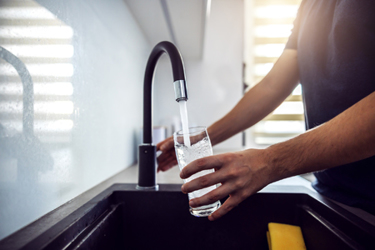Understanding Options Key To Selecting Most Effective, Lowest Cost PFAS Solution

Municipal water utilities throughout the U.S. are increasingly grappling with the need to address per- and polyfluoroalkyl substances (PFAS) once they are detected in source water. Also known as forever chemicals, because they are among the most persistent toxic compounds in existence, even low doses of PFAS have been linked to serious health problems.
Perhaps the most significant factor in efforts to successfully address PFAS contamination is that there is no national requirement for ongoing testing and no national drinking water standard. The U.S. EPA has issued a lifetime health advisory level of 70 ppt for the two most notorious fluorinated chemicals, PFOA and PFOS, but efforts to set an enforceable standard could be years down the road.
Most state agencies believe the national advisory level is way too high, which has led to a patchwork of regulations as states have started to pass their own legal limits for some PFAS. For example, New Jersey was the first to issue a maximum contaminant limit for the compound PFNA, at 13 ppt, and has set standards of 13 ppt for PFOS and 14 ppt for PFOA. Some other states have either set or proposed limits for PFOA and PFOS.
Because standards are a moving target while treatment options are limited and can represent a massive expense, addressing PFAS can be especially challenging for small water systems. The key to finding an optimal solution requires a thorough investigation of solutions.
Evaluating The Technologies
High-pressure membranes, such as nanofiltration or reverse osmosis (RO), have been extremely effective at removing PFAS, according to the U.S. EPA. Research shows that these types of membranes are typically more than 90 percent effective at removing a wide range of PFAS, including shorter chain PFAS. While RO is highly effective, it comes with steep capital and operating costs, which includes the handling of the contaminated waste stream.
Another treatment option is anion exchange treatment, or resins. Ion exchange resins are made up of highly porous, polymeric material that is acid, base, and water insoluble. One benefit of this treatment technology is that there is no need for resin regeneration, so there is no contaminant waste stream to handle, treat, or dispose.
However, it is still not the most economical solution in many cases.
Granular activated carbon (GAC) can be the most economical solution to PFAS treatment for smaller utilities. This includes the use of carbon-bedded systems and carbon cartridges, each of which fit inside a larger cell. GAC is a filtration media that is not selective for only PFAS, meaning that other organic contaminants in the water will also be removed.
Determining the most efficient and cost-effective GAC system requires further investigation into specific applications.
One example is the Harmsco Hurricane Filtration System by Harmsco Filtration Products, which combines cyclonic separation, cartridge filtration, and patented “Up-Flow” technology in a compact filter housing design. Harmsco touts the industry’s largest carbon block cartridge, which is significant because the larger surface area promotes longer contact times, while the Up-Flow feature allows self-purging to eliminate entrapped air.
Additionally, the Hurricane is known for quick filter changeout times and self-purging design.
Case Study
Aqua North Carolina (ANC) — a small public water system in North Carolina that currently follows a PFAS standard of 13 ng/L — detected elevated PFOA and PFAS concentrations in one of its wells (average combined PFOA and PFAS concentrations were approximately 37.5 ng/L).
Because it has extensive experience with cartridge filtration for the removal of iron and manganese particulates, ANC began pilot testing the Harmsco activated carbon cartridge filter for PFOA and PFOS treatment.
The goal was to determine its efficacy in applications throughout its service area.
The pilot consisted of two parallel cartridge filters, with an average flow rate of 30 gallons per minute total. Sampling included raw, entry point, and pre- and post-filter changeouts. A removal rate of 65.3 percent was required to comply with internal proposed standards. Results of the pilot are expected soon.
Because of its effectiveness at a lower cost, similar size utilities may find cartridge filtration a viable option to address PFAS in similar circumstances. Harmsco welcomes any water utilities that would like to participate in pilot studies. Contact sales@harmsco.com for more details.
